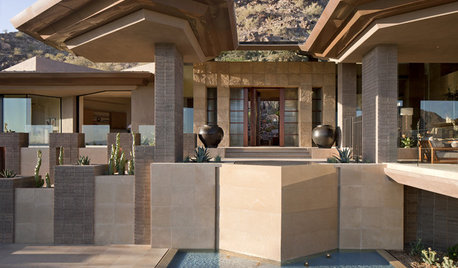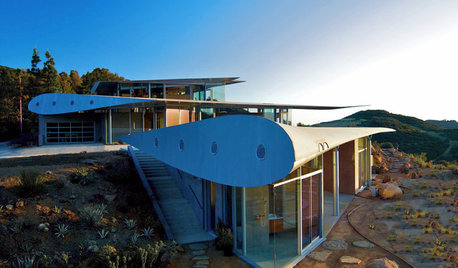Sad Hillside. Asking too much?
lisaslists2000
9 years ago
Related Stories

HOUZZ TOURSHouzz Tour: Stunning Desert Hillside Home in Arizona
An extraordinary, expansive home near Phoenix celebrates and interacts with the beauty of its natural surroundings
Full Story
ARCHITECTUREHouzz Tour: A Salvaged Airplane Becomes a Soaring Hillside Home
Made from a retired 747, this modern house in Malibu shows how architecturally stunning reuse can be
Full Story
KITCHEN DESIGN9 Questions to Ask When Planning a Kitchen Pantry
Avoid blunders and get the storage space and layout you need by asking these questions before you begin
Full Story
SELLING YOUR HOUSE15 Questions to Ask When Interviewing a Real Estate Agent
Here’s what you should find out before selecting an agent to sell your home
Full Story
WORKING WITH PROS12 Questions Your Interior Designer Should Ask You
The best decorators aren’t dictators — and they’re not mind readers either. To understand your tastes, they need this essential info
Full Story
WORKING WITH PROS10 Questions to Ask Potential Contractors
Ensure the right fit by interviewing general contractors about topics that go beyond the basics
Full Story
SELLING YOUR HOUSEFix It or Not? What to Know When Prepping Your Home for Sale
Find out whether a repair is worth making before you put your house on the market
Full Story
MOST POPULAR8 Questions to Ask Yourself Before Meeting With Your Designer
Thinking in advance about how you use your space will get your first design consultation off to its best start
Full Story
MOVINGHiring a Home Inspector? Ask These 10 Questions
How to make sure the pro who performs your home inspection is properly qualified and insured, so you can protect your big investment
Full Story
ORGANIZINGPre-Storage Checklist: 10 Questions to Ask Yourself Before You Store
Wait, stop. Do you really need to keep that item you’re about to put into storage?
Full Story







thrills
mad_gallica (z5 Eastern NY)
Related Professionals
Londonderry Landscape Architects & Landscape Designers · Beachwood Landscape Architects & Landscape Designers · Maple Heights Landscape Architects & Landscape Designers · Elgin Landscape Contractors · Eureka Landscape Contractors · Gaithersburg Landscape Contractors · Lexington Landscape Contractors · North Haven Landscape Contractors · North Potomac Landscape Contractors · North Ridgeville Landscape Contractors · Old Saybrook Landscape Contractors · Vancouver Landscape Contractors · West Coon Rapids Landscape Contractors · Weymouth Landscape Contractors · Reisterstown Landscape Contractorssplitrock
TexasRanger10
wantonamara Z8 CenTex
shadeyplace
TexasRanger10
lisaslists2000Original Author
wantonamara Z8 CenTex
shadeyplace
lisaslists2000Original Author
TexasRanger10
TexasRanger10
wantonamara Z8 CenTex
TexasRanger10